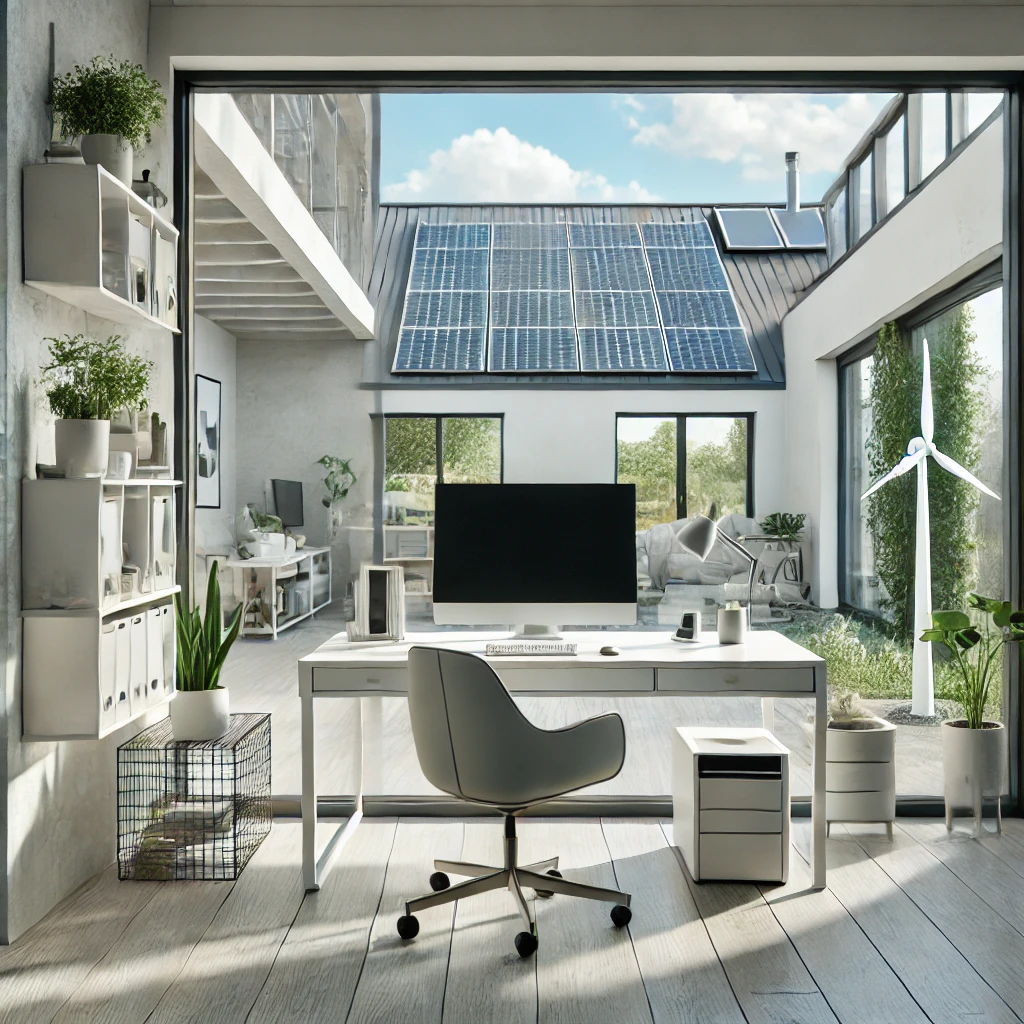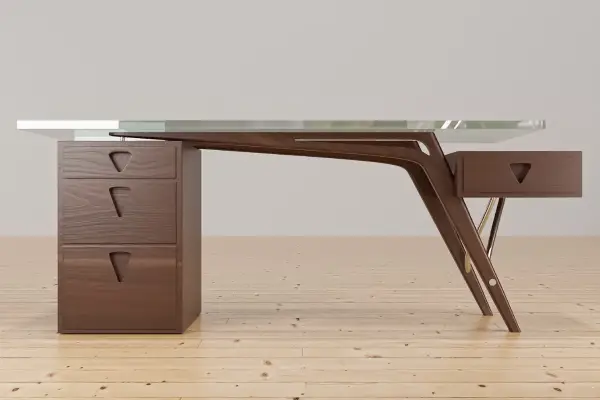In the quest for an organized and productive home office, a minimalist filing system can be a game-changer. By adopting minimalist principles, you can transform a cluttered and chaotic filing system into one that is streamlined, efficient, and easy to maintain. Not only does this help you keep track of important documents, but it also enhances your overall work environment, making it a more pleasant and productive space.
A tidy and efficient home office is essential for several reasons. First, it reduces the time spent searching for documents, allowing you to focus on more important tasks. Second, it minimizes stress and mental clutter, creating a more serene and conducive work environment. Lastly, an organized filing system ensures that important papers are easily accessible, reducing the risk of losing critical information.
In this article, we will explore the key components of minimalist filing systems and provide practical steps to implement one in your home office. We will discuss how to assess your current filing system, declutter unnecessary documents, and choose the right filing methods. Additionally, we will cover the importance of maintaining your system through regular reviews and purges, as well as how to personalize it without compromising on minimalist principles. By the end of this article, you’ll be equipped with the knowledge and tools to keep your home office tidy and efficient with a minimalist filing system.
Understanding Minimalist Filing Systems
To create an effective minimalist filing system, it’s important to first understand the core principles and benefits that underpin this approach. Minimalism in filing is about simplicity, functionality, and intentionality. It focuses on keeping only what is necessary and useful, and organizing those items in a way that maximizes efficiency and clarity.
Definition and Principles of Minimalist Filing Systems
A minimalist filing system is one that eliminates unnecessary documents and clutter, and organizes essential items in a streamlined, logical manner. The key principles include:
Simplicity: Keep the system as straightforward as possible. Avoid overly complex categories and subcategories.
Functionality: Ensure that the system meets your practical needs. It should be easy to use and maintain.
Intentionality: Be deliberate about what you keep and how you organize it. Every item should have a clear purpose and place.
Benefits of Minimalist Filing in a Home Office
Adopting a minimalist filing system in your home office offers numerous advantages:
Enhanced Productivity: With a well-organized filing system, you can quickly find the documents you need, reducing time wasted on searching. This allows you to focus more on your work and less on managing clutter.
Reduced Stress and Mental Clutter: A tidy environment contributes to a clearer mind. By eliminating unnecessary papers and organizing your files effectively, you create a more serene and less stressful work atmosphere.
Easy Access to Important Documents: Having a streamlined filing system ensures that critical documents are easily accessible when needed. This can be especially beneficial in urgent situations where quick access to information is crucial.
Increased Efficiency: A minimalist filing system helps streamline your workflow by keeping only what’s essential and arranging it in a way that supports your daily tasks. This can lead to improved efficiency and effectiveness in your work.
Better Space Utilization: By reducing the volume of documents and organizing them efficiently, you can make better use of your available space. This can free up room for other important office items or simply create a more open and airy environment.
Understanding these principles and benefits is the first step toward implementing a minimalist filing system in your home office. In the next sections, we will delve into the practical steps to assess your current filing system, declutter unnecessary documents, and establish an effective and sustainable organization strategy.
Assessing Your Current Filing System
Before you can implement a minimalist filing system, it’s crucial to understand your current situation. This involves taking inventory of your existing files, identifying which documents are essential and which are not, and recognizing the impact of a cluttered filing system on your productivity and peace of mind.
Taking Inventory of Your Existing Files
Start by gathering all your files and documents in one place. This might include physical papers in filing cabinets, drawers, and piles on your desk, as well as digital files stored on your computer or cloud storage. The goal is to get a comprehensive view of everything you currently have.
Physical Files: Collect all physical documents and categorize them by type (e.g., bills, receipts, contracts, personal documents).
Digital Files: Organize your digital files into categories or folders that reflect their content. This will make it easier to assess what you have and what you might need to delete or reorganize.
Identifying Essential vs. Non-Essential Items
Once you have a clear inventory of your files, it’s time to determine which documents are essential and which are not. This step is crucial for reducing clutter and focusing on what truly matters.
Essential Items: These are documents that you need to keep for legal, financial, or operational reasons. Examples include tax records, contracts, identification documents, and important correspondence.
Non-Essential Items: These are documents that are no longer needed or can be digitized and stored electronically. Examples include outdated receipts, old magazines, duplicate copies, and unnecessary printouts.
Ask yourself the following questions to help determine the necessity of each document:
Is this document required for legal or tax purposes?
Will I need this document for reference in the near future?
Can this document be easily obtained or recreated if needed?
Understanding the Impact of a Cluttered Filing System
A cluttered filing system can have several negative effects on your productivity and mental well-being:
Wasted Time: Searching for documents in a disorganized system can be time-consuming and frustrating. This wasted time could be better spent on more productive tasks.
Increased Stress: Cluttered spaces can contribute to feelings of stress and overwhelm. A disorganized filing system can make it difficult to find important documents when you need them, adding to your stress levels.
Decreased Efficiency: A cluttered system hinders your ability to work efficiently. When your files are not organized, you may struggle to maintain a smooth workflow and meet deadlines.
Mental Clutter: Physical clutter often translates to mental clutter. An organized filing system helps create a sense of order and clarity, allowing you to focus better on your tasks.
By taking the time to assess your current filing system, you can identify areas for improvement and set the stage for a more efficient and organized workspace. In the next section, we will discuss the steps to create a minimalist filing system, including how to declutter, categorize, and choose the right filing methods.
Steps to Create a Minimalist Filing System
Creating a minimalist filing system involves a systematic approach to decluttering, categorizing, and organizing your documents in a way that maximizes efficiency and simplicity. Here are the key steps to help you set up an effective minimalist filing system:
Step 1: Declutter Your Files
The first step in creating a minimalist filing system is to declutter your existing files. This involves purging unnecessary documents and organizing the remaining items.
- Purging Unnecessary Documents: Go through each file and determine if it is necessary to keep. Use the criteria discussed earlier to identify essential versus non-essential items. Shred or recycle documents that are no longer needed. Be ruthless in your decluttering process to ensure you only keep what is truly necessary.
- Shredding and Recycling Old Papers: Properly dispose of sensitive documents by shredding them. Recycle paper that doesn’t contain sensitive information. This not only helps in reducing clutter but also supports environmental sustainability.
Step 2: Categorize Your Files
Once you have decluttered your files, the next step is to categorize them. This helps in organizing your documents in a logical and easy-to-access manner.
- Grouping Similar Documents Together: Create broad categories for your files. For example, you might have categories such as “Finance,” “Legal,” “Personal,” and “Work.” Within each broad category, you can have subcategories for more specific types of documents.
- Using Broad Categories to Simplify Organization: Avoid creating too many detailed subcategories, which can overcomplicate your filing system. Instead, use broad categories that make it easy to locate and store documents.
Step 3: Choose the Right Filing Method
Deciding on the right filing method is crucial for maintaining a minimalist and efficient system. Consider whether a paper or digital filing system (or a combination of both) best suits your needs.
- Paper Filing Systems: If you prefer to keep physical copies of documents, use file folders, binders, or accordion files. Label each folder or binder clearly to ensure easy identification and access.
- Digital Filing Systems: For those who prefer a paperless approach, digitize your documents using a scanner. Organize your digital files in folders and subfolders that mirror your physical filing system. Use cloud storage solutions for easy access and backup.
- Combination Systems: Some people may benefit from a hybrid approach, keeping critical documents in physical form and storing less essential documents digitally. This combines the best of both worlds.
Step 4: Implement a Labeling System
A clear and concise labeling system is essential for maintaining an organized filing system.
- Clear and Concise Labeling: Ensure that each file or folder is labeled in a way that makes it easy to identify its contents at a glance. Use straightforward and consistent naming conventions.
- Using Color Codes or Simple Tags: Color-coding can help visually distinguish between different categories of documents. Alternatively, you can use simple tags or labels to categorize your files. For example, you might use blue for finance, red for legal, and green for personal documents.
By following these steps, you can create a minimalist filing system that is easy to maintain and enhances the efficiency of your home office. In the next section, we will explore the pros and cons of digital versus physical filing systems and provide best practices for integrating both systems.
Digital vs. Physical Filing Systems
When setting up a minimalist filing system for your home office, one of the key decisions you’ll need to make is whether to go with a digital, physical, or hybrid approach. Each method has its own advantages and considerations, so let’s explore the pros and cons of digital and physical filing systems to help you choose the right one for your needs.
Pros and Cons of Digital Filing Systems
Pros:
- Space Efficiency: Digital files take up virtually no physical space, allowing you to free up valuable room in your office.
- Accessibility: Documents stored digitally can be accessed from anywhere with an internet connection, promoting flexibility and remote work capabilities.
- Searchability: Digital documents can be easily searched using keywords, making it quick to find specific information.
- Security: Encrypted cloud storage and backups provide robust security measures to protect sensitive information.
Cons:
- Dependency on Technology: Relies on electronic devices and internet access, which may not always be available or reliable.
- Learning Curve: Requires some initial setup and familiarity with digital tools and software.
- Potential for Data Breaches: Cybersecurity risks exist, requiring diligence in protecting digital files from unauthorized access.
Pros and Cons of Physical Filing Systems
Pros:
- Tactile Accessibility: Physical documents can be accessed without the need for electronic devices or internet access.
- Tangible Organization: Some people find it easier to mentally categorize and recall information from physical documents.
- Reliability: No risk of digital file corruption or loss due to technological issues.
Cons:
- Space Constraints: Physical files require physical storage space, which can be limited and may lead to clutter if not managed properly.
- Limited Accessibility: Documents are only accessible from the location where they are stored, which may be inconvenient for remote work or travel.
- Organizational Challenges: Maintaining a tidy and efficient physical filing system requires ongoing effort and discipline.
Best Practices for Integrating Both Systems
For many individuals, a hybrid approach that combines digital and physical filing systems offers the best of both worlds:
- Critical vs. Non-Critical Documents: Reserve physical storage for critical documents that require hard copies (e.g., legal documents, original contracts) and digitize less critical documents.
- Backup and Security: Implement a robust backup strategy for digital files to protect against data loss, while storing physical copies in a secure and organized manner.
- Consistency in Organization: Maintain consistency in how you organize both digital and physical files to facilitate easy retrieval and maintenance.
- Regular Review and Purge: Periodically review both digital and physical files to remove outdated or unnecessary documents, keeping your filing system clutter-free and efficient.
By carefully considering the pros and cons of digital and physical filing systems and implementing best practices for integration, you can create a minimalist filing system that aligns with your preferences and enhances the efficiency of your home office. In the next section, we will discuss practical tips for maintaining your minimalist filing system, including daily habits and regular reviews.
Maintaining Your Minimalist Filing System
Once you’ve established a minimalist filing system in your home office, maintaining its efficiency and organization is essential for long-term success. Consistent upkeep and periodic reviews will ensure that your files remain tidy, accessible, and aligned with your minimalist principles. Here are practical tips and strategies to help you maintain your minimalist filing system effectively:
Daily Habits for Maintaining an Organized Filing System
Developing daily habits can help prevent clutter from accumulating and maintain the organization of your filing system:
End-of-Day Cleanup: Spend a few minutes at the end of each workday tidying up your workspace and filing any new documents. This prevents papers from piling up and ensures that your files remain organized.
File Immediately: Handle incoming documents promptly by filing them in their designated folders or scanning and saving them digitally if applicable.
Digital Organization: If using digital files, regularly sort and organize documents into appropriate folders. Delete or archive files that are no longer needed to free up storage space.
Weekly and Monthly Reviews of Your Files
Schedule regular reviews to assess the contents of your filing system and make necessary adjustments:
Weekly Check-In: Dedicate time each week to review recently filed documents, ensure they are properly categorized, and address any filing backlog.
Monthly Purge: Conduct a monthly review to declutter your files. Dispose of outdated documents, duplicate copies, or materials that are no longer relevant or needed.
Update Labels and Categories: Periodically evaluate your labeling system and file categories to ensure they still reflect your current organizational needs.
Regularly Reassessing Your Filing Needs
As your work and personal circumstances evolve, periodically reassess your filing system to ensure it continues to meet your needs:
Adjust to Changes: Modify your filing system as needed to accommodate new projects, changes in responsibilities, or shifts in workflow.
Scale Up or Down: If your filing system becomes too crowded or sparse, adjust the number of categories or files accordingly to maintain balance and efficiency.
Stay Flexible: Be willing to experiment with different organizational methods or tools to find what works best for you over time.
Ensuring Consistency with Minimalist Principles
Maintaining a minimalist filing system is about more than just organization—it’s about embracing a lifestyle of simplicity and intentionality:
Avoid Accumulation: Resist the urge to accumulate unnecessary documents or retain files beyond their usefulness. Regularly assess whether each document serves a purpose in your current work or personal life.
Streamline Processes: Continuously look for ways to streamline your filing processes to make them more efficient and less time-consuming.
Commit to Sustainability: Whenever possible, opt for digital documents to reduce paper consumption and minimize environmental impact.
By incorporating these practices into your routine, you can ensure that your minimalist filing system remains effective and supports your productivity in the home office. In the next section, we will explore how to personalize your filing system with meaningful touches while maintaining its minimalist integrity.
Personalizing Your Minimalist Office Supply Organization
Even within the framework of a minimalist office, there’s room for personal touches that reflect your style and preferences without compromising the simplicity and functionality of your workspace. Personalizing your filing system can enhance your work environment, making it more enjoyable and uniquely yours. Here’s how to add personal touches while maintaining minimalism:
Adding Personal Touches Without Creating Clutter
Personalization doesn’t have to mean clutter. By choosing meaningful and functional items, you can create a workspace that is both personalized and organized.
Meaningful Decor: Add a few personal items that bring you joy or inspiration. This could be a small framed photo, a piece of artwork, or a favorite quote. Choose items that have significance to you and keep them minimal to avoid clutter.
Functional Accessories: Select office supplies and accessories that are both functional and aesthetically pleasing. For example, choose a sleek, minimalist pen holder, a stylish notebook, or a chic desk lamp that enhances your workspace without overwhelming it.
Choosing Meaningful and Functional Items
When adding personal touches, focus on items that serve a dual purpose: they should be meaningful to you and also functional in your workspace.
Plants: Incorporate a small plant or two. Plants add a touch of nature and have been shown to improve air quality and boost mood. Choose low-maintenance plants like succulents or air plants that don’t require much care.
Personalized Stationery: Use personalized stationery or notebooks that reflect your style. These can add a unique touch to your office supplies while being practical for note-taking and organization.
Customized Filing Accessories: Consider using customized or color-coded file folders and labels that align with your minimalist aesthetic. These can make your filing system more visually appealing and easier to navigate.
Incorporating Aesthetics into Supply Organization
Your filing system and office supplies can be organized in a way that is both functional and visually appealing. Here are some design choices to consider:
Simple and Elegant Design Choices: Opt for office supplies and organizational tools with clean lines and neutral colors. This creates a cohesive and calming workspace that adheres to minimalist principles.
Balanced Use of Color: While maintaining a mostly neutral palette, you can use small pops of color to differentiate categories or add visual interest. For example, use a single color scheme for file labels or desk organizers to maintain harmony.
Harmonious Storage Solutions: Choose storage solutions that blend seamlessly with your office decor. For example, use matching storage boxes, sleek trays, and minimalist baskets to keep supplies organized and out of sight.
Balancing Function and Form
The key to successful personalization in a minimalist workspace is balancing function and form. Every item should not only look good but also serve a practical purpose.
Practical Decorations: Select decor that doubles as storage or organization. For example, a beautiful box can hold office supplies, and a decorative tray can keep your desk essentials organized.
Minimalist Artwork: Hang a piece of minimalist artwork or a motivational poster that resonates with you. This adds personality to your workspace without adding clutter.
Functional Furniture: Choose furniture that is both stylish and practical. A sleek, ergonomic chair or a minimalist desk can enhance your workspace aesthetically while providing comfort and support.
By thoughtfully adding personal touches and choosing items that combine function and aesthetics, you can create a minimalist home office that is uniquely yours. This personalized yet uncluttered environment will not only be pleasing to the eye but also conducive to productivity and efficiency. In the next section, we will discuss common pitfalls to avoid in maintaining your minimalist filing system.
Common Pitfalls to Avoid
Maintaining a minimalist filing system in your home office can be challenging, especially if you’re not aware of common pitfalls that can disrupt your organization efforts. Here are some frequent mistakes to watch out for and tips on how to avoid them:
Accumulating “Just in Case” Items
One of the biggest pitfalls in maintaining a minimalist filing system is the tendency to keep items “just in case” you might need them in the future.
Be Disciplined: Regularly review your files and supplies to ensure that each item serves a current, clear purpose. If you haven’t used a document or supply in the past six months to a year, consider whether it’s truly necessary to keep it.
Adopt a Clear-Out Routine: Establish a routine for purging non-essential items. Schedule quarterly reviews to evaluate your filing system and remove anything that is no longer relevant.
Ask Critical Questions: When deciding whether to keep an item, ask yourself if it’s something you can easily replace or access digitally if needed. This can help you let go of items you’re holding onto without a clear purpose.
Overcomplicating the Organization Process
Another common pitfall is overcomplicating your filing system with too many categories, subcategories, and intricate organization methods.
Keep It Simple: Stick to broad categories that are easy to maintain and navigate. Overly detailed categories can make filing and retrieving documents more time-consuming and confusing.
Limit Subcategories: While it’s important to have some level of organization, avoid breaking down categories into too many subcategories. Aim for simplicity and ease of use.
Use Universal Systems: Choose organization methods that are universally understood and easy to follow. This can be particularly helpful if you share your filing system with others or need to explain it to someone else.
Failing to Maintain Consistency
Consistency is key to the success of a minimalist filing system. Inconsistent habits can lead to clutter and disorganization over time.
Develop Habits: Establish daily and weekly habits for maintaining your filing system. Regularly file documents immediately rather than letting them pile up.
Set Reminders: Use reminders or calendar alerts to prompt regular maintenance of your filing system. This can help you stay on top of your organization routine.
Review and Adjust: Periodically review your filing system to ensure it still meets your needs. Make adjustments as necessary to maintain consistency and functionality.
By being mindful of these common pitfalls and implementing strategies to avoid them, you can maintain a minimalist filing system that remains tidy and efficient. In the final section, we will recap the essential tips and strategies for creating and maintaining a minimalist filing system and offer some final thoughts on the benefits of an organized, minimalist home office.
Conclusion
Creating and maintaining a minimalist filing system in your home office can significantly enhance your productivity, reduce stress, and foster a more organized work environment. By following the strategies and tips outlined in this article, you can achieve a tidy and efficient filing system that aligns with minimalist principles.
Recap of Essential Tips and Strategies
- Assess Your Current System: Start by taking inventory of your existing files, identifying essential versus non-essential items, and understanding the impact of clutter on your work.
- Declutter Effectively: Purge unnecessary documents, categorize your files, and choose the right filing method (digital, physical, or hybrid).
- Use Appropriate Storage Solutions: Select functional and aesthetic storage options such as desk organizers, shelving units, drawer dividers, and labeling systems.
- Organize by Frequency of Use: Keep daily use items within easy reach, store weekly use items nearby but out of the way, and place occasional use items in less accessible areas.
- Implement a Maintenance Routine: Develop daily habits for maintaining organization, conduct regular reviews, and reassess your filing needs to ensure consistency with minimalist principles.
- Personalize Thoughtfully: Add personal touches without creating clutter by choosing meaningful and functional items that enhance your workspace’s aesthetics and organization.
- Avoid Common Pitfalls: Be mindful of accumulating unnecessary items, overcomplicating the organization process, and failing to maintain consistency.
Encouragement to Start and Maintain a Minimalist Office Supply Organization System
Embarking on the journey to create a minimalist filing system may seem daunting at first, but the benefits are well worth the effort. By taking the time to declutter, organize, and maintain your files, you’ll create a more streamlined and efficient workspace. This, in turn, will help you focus better, work more productively, and enjoy a greater sense of calm and order in your home office.
Final Thoughts on the Benefits of an Organized, Minimalist Workspace
An organized, minimalist workspace is not just about aesthetics—it’s about creating an environment that supports your well-being and enhances your ability to work effectively. By minimizing clutter and maximizing efficiency, you can reduce stress, increase productivity, and foster a more creative and enjoyable work experience.
Remember, the key to maintaining a minimalist filing system is consistency and intentionality. Regularly assess your needs, adjust your system as necessary, and stay committed to the principles of minimalism. With these practices in place, you’ll enjoy the lasting benefits of a tidy, efficient, and harmonious home office.






